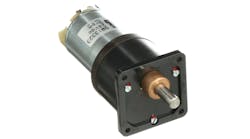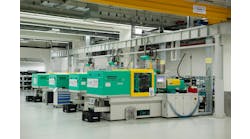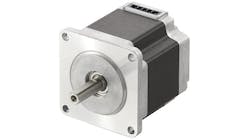I was the drive specialist for my regional office at Allen-Bradley in early 1980s. Vector drives, variable-frequency drives, servos and big-horsepower drives were becoming commonplace. Then this thing called an ac servo came to be.
Wait. What? An ac servo? How could a servo motor driven by a 60-Hertz signal be used in such critical applications as motion control, slide control and robotics? That couldn’t happen—dc all the way.
Also read: Servo terminology makes a difference
Well, here we are many moons later, and ac servos are the mainstay of motion at every level.
A servomechanism allows for the accurate positioning of a device—slide, robot arm, insertion tools—using a feedback method to determine many components of the move set.
Consider a slide that needs to move from Point A to Point B. Many decisions need to be made to implement the movement profile—acceleration to a point, constant speed to another point, a deceleration curve to allow the inertia to dissipate in order to stop the device at the exact point that is needed.
We used to use profile-move-set configuration sheets, which created a starting point to the move. There wasn’t a teaching moment available as such. Robot move sets were a bit trickier, due to the inertia of the arm and the bulky effectors in the early days.
Fanuc Robot controllers used the Karel language to program its moves. And, yes, there was a teaching pendant that allowed for that moment in time to create endpoint moves, which was very progressive.
There was no consistency in motion-control systems. It was typically proprietary and cumbersome. With the advent of IEC-61131 language standard, there was some hope of consistency. That was brought to the market by PLCopen, the global association that supports the standard.
PLCopen created a working group to investigate motion control through the use of common-language function blocks, which could be used with any hardware interface.
PLCopen created a certification model that suppliers could embrace in order to show customers where the vendors’ solutions fit into the specification. The certification has four sections: basics, coordinated motion, homing and fluid power.
There are 28 certified vendors for PLCopen Motion Control; however, most are only certified for the Basics section.
What this means for users of motion software is that, regardless of the servo hardware that is used, the motion profiling software would be similar if not the same.
The advent of the programmable automation controller (PAC) has brought integrated motion into the picture. The way the PAC motion-axis hardware can be implemented allows for an easy transition for any machine builder that may not be familiar with providing this type of control.
Another advance in most control systems is communication strategy. A stand-alone motion controller can be placed on a network that communicates to the mother ship. Sercos (serial real-time communications system) was one of the first interfaces used for motion in particular. It is now in its third iteration, Sercos III. I would suggest that Ethernet as a medium has taken motion to a new level.
Fieldbus protocols over Ethernet have proliferated over the complete industrial spectrum. Process devices along with motion can be used and integrated with the ease of a square peg in square hole.
We have the choice of protocol, medium, speed, environmental requirements and the like for any motion application. Even stand-alone robot controllers can be an extension of any control system using a networking strategy.
In my career of automation software projects, my motion experience has been limited. The early days were very frustrating because of the lack of a viable platform to use in applications. The systems were expensive, as well.
With the ac servo motor, the user gets better life expectancy and higher efficiency. While the implementation of any servo system really doesn’t differentiate between ac and dc, other factors come into play.
In this time of supply chain issues, availability might just be the determining factor.
The change in the availability of motion for any control system really does allow for a truly integrated system where nothing in the system is an island. Applications for a servo system in the past had cost constraints, as well as the how-am-I-going-to-do-this? mindset.
We are light years ahead of where we were. There should be no hesitation in applying servo positioning control in any system. Something as simple as controlling the stroke of a screw cylinder to position a part under a drill bit can be utilized to maximize production and, with the feedback employed, reduce waste and the number of bad parts. The accuracy is just not attainable with proximity switches.
Thankfully, we have come a long way, baby.





